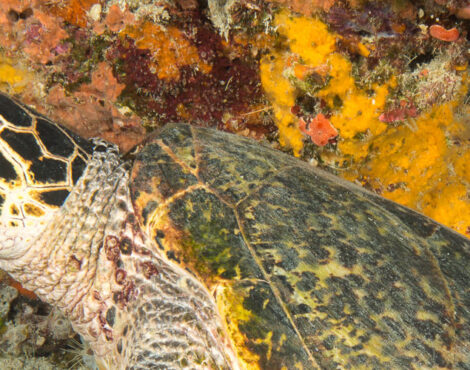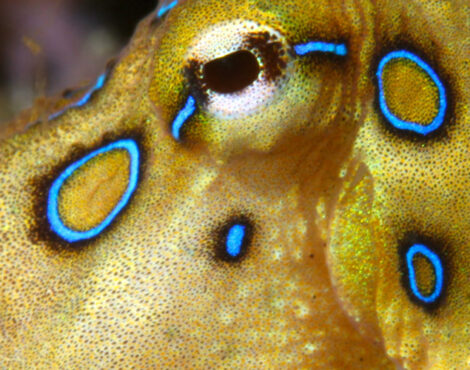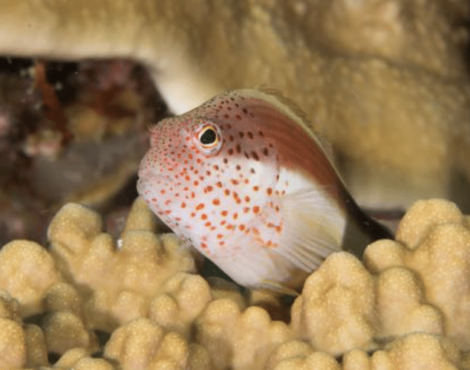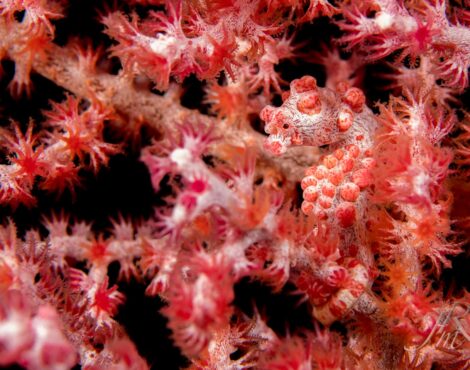Discover the Enchanting World of Pygmy Seahorses in Bunaken Marine Park – A Macro Photographer’s Paradise!
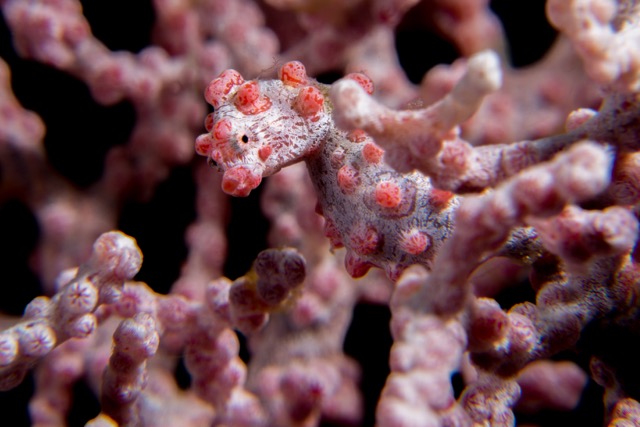
Macro Photography Haven: Exploring Bunaken Marine Park’s Miniature Critters
Bunaken Marine Park, much like the rest of North Sulawesi, is world renowned for its endless supply of miniature critters and macro photography possibilities.
Pygmy Seahorses: Tiny Wonders of the Coral Triangle
Pygmy seahorses are a group of tiny fish from the syngnathid family (scientific name for seahorses and pipefish), which can be found throughout the Coral Triangle and other parts of South East Asia. Due to their minute size and impressive camouflage, they are a favourite amongst divers and photographers who want to get a glimpse of some of the smallest and most beautiful fish around.
The first known pygmy sea horse was the Hippocamusbargibanti, which has been named since 1970. It would take a number of decades before more species would be discovered, and since the year 2000 a further 6 species have been named, and there is a further species that has been discovered, but not yet officially described.
Distinctive Traits of Pygmy Seahorses: Nature’s Smallest Marvels
While being directly related to their larger cousins, pygmy seahorses are different from all other seahorses and pipefish. The main noticeable difference is their small size, with the largest species reaching a maximum of 27 mm in length. There are other differences too; they only have a single slit gill opening on the back of their head, and the males brood the young inside their trunk, instead of in a tail pouch. It is important to note that there are other species named as pygmy seahorses such as the Hippocampus debelius, which is found in the Red Sea. Although this species is small (35mm), it is not considered a pygmy seahorse because it does not have the single gill opening and trunk brooding of true pygmy seahorses.
Unique Habitat Choices: Pygmy Seahorses on Coral Reefs
Another big difference is their choice of habitat. Larger species of seahorse are usually found on sandy or muddy slopes, not on coral reefs and areas exposed to strong current. Pygmy sea horses can be found throughout the walls and areas exposed to current, with certain species living in association with gorgonian corals, clinging on with their tails.Like all seahorses and true pipefish (not ghost pipefish), it is the male of the breeding pair who looks after the developing young, storing them in his trunk until they are born, roughly 2 weeks after fertilisation. When the newly born young are ejected from the males trunk, they are swept away by the currents where they begin their planktonic phase, feeding and growing before settling on the reef.
Spotting Sulawesi’s Pygmy Seahorses: A Guided Adventure in Bunaken Marine Park
A number of different species of pygmy seahorse can be observed around Sulawesi, and in Bunaken Marine Park we can frequently see three different species. Due to their size and amazing colouration, they can be tricky to spot, so you will need a good guide with a keen eye to see them.
- Hippocampus bargibanti
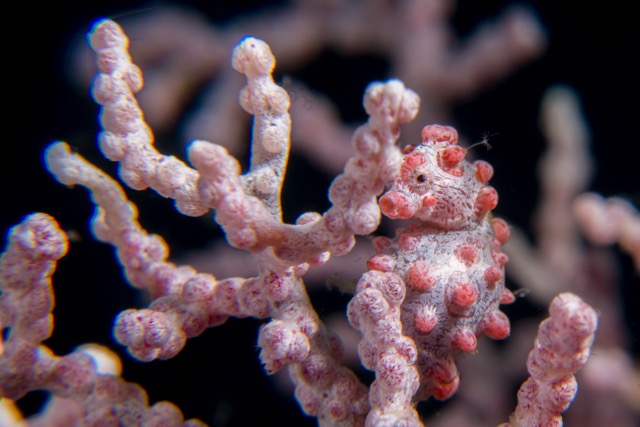
The ‘original’ pygmy seahorse, Bargibant’s pygmy seahorse was the first species to be discovered. It has the largest range of all the true pygmy seahorses, found all the way from Southern Japan, throughout Indonesia, parts of the Great Barrier Reef, and over to Fiji. They are one of the largest species, reaching a maximum of 27mm. They will spend their entire adult life on a single gorgonian coral, thus are extremely dependant on their host gorgonian. There are two main colour variations: grey with red tubercles, and yellow with orange tubercles.
- Hippocampus denise
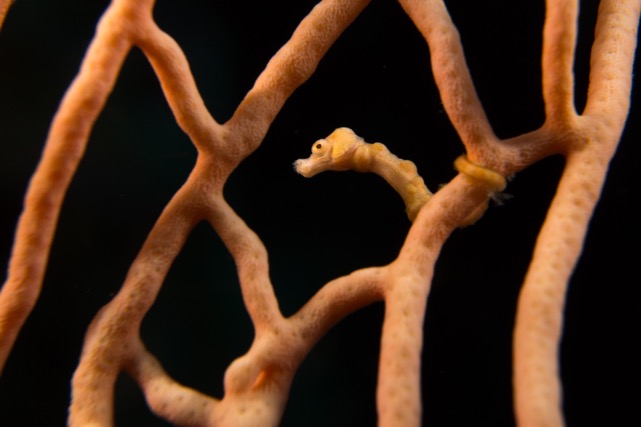
With a maximum length of 24mm, Denise’s pygmy seahorse is smaller than the Bargibant’s pygmy seahorse, however is similar in its habitat. The Denise’s pygmy seahorse lives exclusively on gorgonian sea fans much like the Bargibanti, however unlike the Bargibanti, it can reside on a number of different gorgonian species.
The Denise’s pygmy seahorse has a slender body that is either completely smooth, or has a few tubercles that appear like the polyps from their host gorgonian. Its colour ranges from a pastel yellow to orange, often with small darker spots.
- Hippocampus pontohi
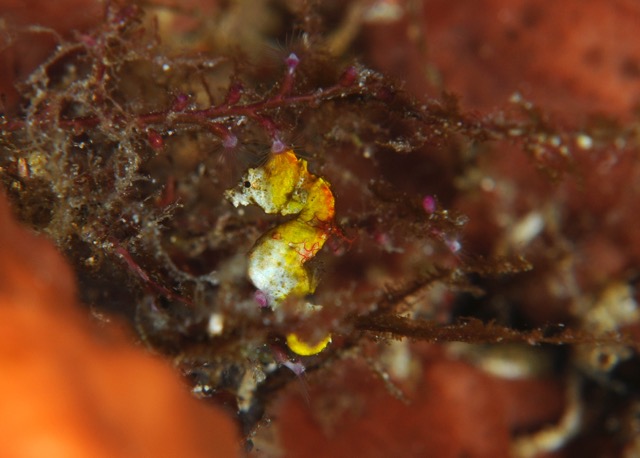
Pontoh’s pygmy seahorse has a little bit of history within Bunaken Marine Park, as this is where it was first discovered by a local Indonesian dive guide named Hence Pontoh in 2003 (officially described in 2008). Although discovered around Bunaken, they can be found throughout eastern Indonesia and Papua New Guinea.
With a maximum length of 17mm, it is one of the smaller species of pygmy seahorse. They have a small and slender body, with a head that is around 25% of the total body size. Unlike the H.deniseand the H.bargibanti, Pontoh’s pygmy seahorse are a free-living species, thus not associated with specific corals. Although they can be found anywhere on the reef, they tend to prefer shallow waters (3-20m) and can frequently be spotted on Halimeda algae and certain hydroids.
They are predominantly whitish, with soft yellow or pink patches on the head or the backside of the body, They also have red hair like filaments coming of the back, and brown to red bands around the tail.
- Hippocampus severnsi (no longer considered a species)
Once considered a separate species, the Severn’s pygmy seahorse is now thought to be a different colour form of the H.pontohi. I have included it hereas many fish I.D books still describe it as a separate species.
The colour is mainly brown, with red, whitish and orange patches on the head and upper back. They also have hair like filaments on their backs, but in this variation they tend to be an off white colour.
Please take extreme care when photographing pygmy seahorses!
Pygmy seahorses are a favourite amongst underwater photographers, and therefore get a lot of attention, which is not always wanted. Some species are highly dependent on their host gorgonian, and irresponsible diving practices can easily damage or destroy their home, killing the pygmy seahorse at the same time. Good buoyancy is essential, and touching the gorgonian at any point is not allowed.
It is very easy to stress pygmy seahorses, and doing so can easily kill them. Constant flashing from strobes can easily disorientate them, as can bright focus lights used by underwater videographers. Please only take a maximum of 5 photos per area (not per pygmy) and if filming, use manual white balance in natural light rather than video lights. It is not allowed to photograph pygmy seahorses at night, as this is when they are sleeping.
With credit to…
Most of this information was gathered from http://oceanrealmimages.com, the website of Dr Richard Smith, who completed his PhD on the biology and conservation of pygmy seahorses.
Dr Smith will be visiting us between June 23rd and July 2nd to offer a marine life and photography workshop. If you are interested in attending this once in a lifetime opportunity, or would like more information about it, please contact us at [email protected]


